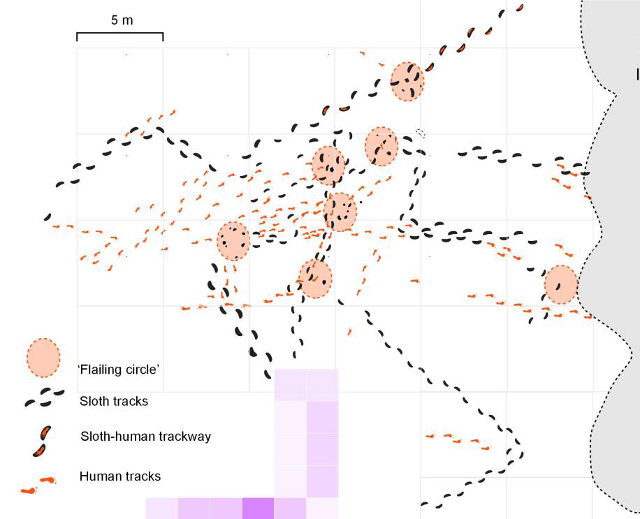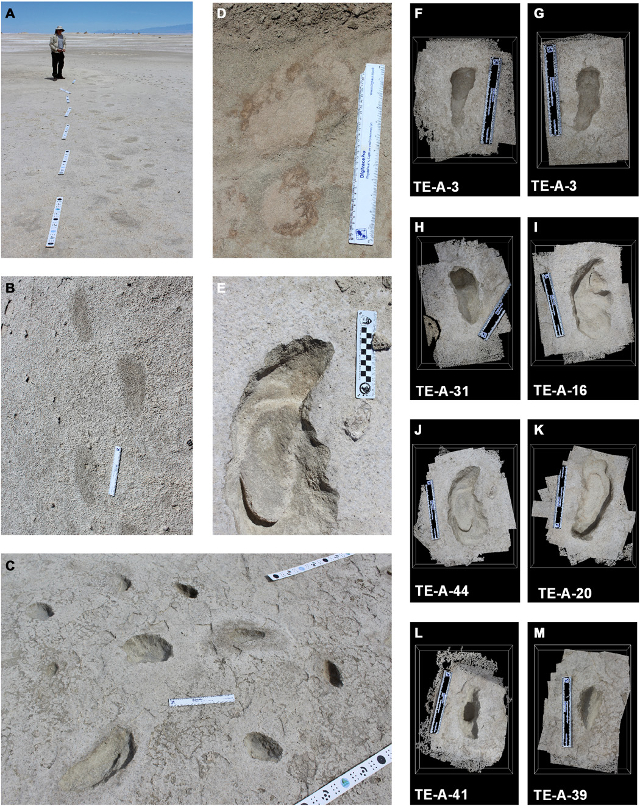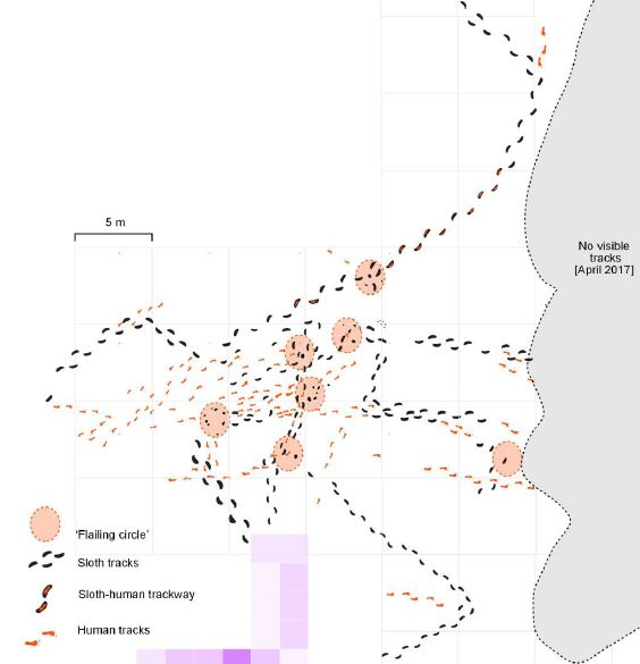
Diagram from Science Advances 25 Apr 2018: Vol. 4, no. 4, eaar7621 DOI: 10.1126/sciadv.aar7621
If you enjoy nature, you should learn how to interpret animal tracks.
Animal tracking reveals a hidden world! Tracking skills let you “read the newspaper” every time you walk in the forest. What animals live here? What are they doing? What are they eating? Are they male or female? Young or old? How do they interact with one another?
Animal tracking lets you use your eyes and brain in an intuitive way to answer these questions.
When I am “in the zone” as an animal tracker, I’m doing these three things:
- Observe all I can
- Ask questions
- Construct a narrative
These are things we can all do. And with a little practice we can all learn to read tracks.
But what if it’s your job to observe, ask questions, and construct narratives? Then perhaps you’re a scientist.
Ancient Footprints and the Mystery of the Giant Sloth
About the time ancient man arrived in North America, giant megafauna suddenly disappeared. Saber-toothed cats, American lions, Woolly mammoth and other giant creatures that once roamed North America disappeared. But was human hunting responsible? The die-off, called the Quaternary extinction, happened at the end of the late Pleistocene. This is approximately 12,000 years ago, just as humans are thought to have arrived in North America. Coincidence?
In April 2018, a scientific paper gave evidence for ancient people hunting megafauna in North America. Archeologists found fossilized footprints in White Sands National Monument in New Mexico. Amazingly, the sets of footprints belonged to ancient people and a Giant Sloth. A Giant Sloth can weigh 5 tons and grow as long as 17 feet! Picture a sloth larger than an African elephant!
Using animal tracking techniques, the authors found evidence the humans stalked and harassed the sloth. The sloth appears to be trying to evade and defend against the humans.
Take a look:

The scientists used animal tracking techniques to analyze the human and sloth tracks. (A and B) Unexcavated sloth track. The track outlines are only visible during specific moisture conditions. (C) Flailing circle made by a sloth reaching forward with its forelimbs and leaving knuckle and claw impressions. (D) Human unshod right foot, unexcavated, and 30 mm below current surface. (E) Superimposed human and sloth track. (F to H) Unshod human feet. (I) Sloth pes track. (J and K) Human tracks superimposed in sloth tracks, indicating contemporaneity. (L and M) Manus claw impression of a sloth. Diagram from Science Advances 25 Apr 2018: Vol. 4, no. 4, eaar7621 DOI: 10.1126/sciadv.aar7621

The map shows sloth and human tracks as well as track density across the whole site (inset). Note the non-linear sloth trackways and sudden changes of direction. “Flailing circles” occur only in association with human tracks. Diagram from Science Advances 25 Apr 2018: Vol. 4, no. 4, eaar7621 DOI: 10.1126/sciadv.aar7621

A closer look at the site. Diagram from Science Advances 25 Apr 2018: Vol. 4, no. 4, eaar7621 DOI: 10.1126/sciadv.aar7621
Here’s a link to the article. You can click on “full text” to read the entire paper.
Footprints preserve terminal Pleistocene hunt? Human-sloth interactions in North America
Science Advances 25 Apr 2018: Vol. 4, no. 4, eaar7621 DOI: 10.1126/sciadv.aar7621
David Bustos, Jackson Jakeway, Tommy M. Urban, Vance T. Holliday, Brendan Fenerty, David A. Raichlen, Marcin Budka, Sally C. Reynolds, Bruce D. Allen, David W. Love, Vincent L. Santucci, Daniel Odess, Patrick Willey, H. Gregory McDonald and Matthew R. Bennett
Exciting but Uncertain
Nothing is certain. It’s hard to date tracks this ancient to prove they were made simultaneously (joke). But the association of the tracks, and how they appear to interact is strong evidence for the authors’ thesis.
Articles on Animal Tracking on NatureOutside
If you would like to learn more about animal tracking, here are some articles to look at.
Hike to Skeleton Grove (Part 1)
Mountain Lion Tracks – Learn to Read Them
Mysteries on the Beach (Part 1)
Stalking the Black Bear – High Adventure in the Forest (Part 1)
For fun facts and useful tips, join the free Bushcraft Newsletter.



Leave a Comment